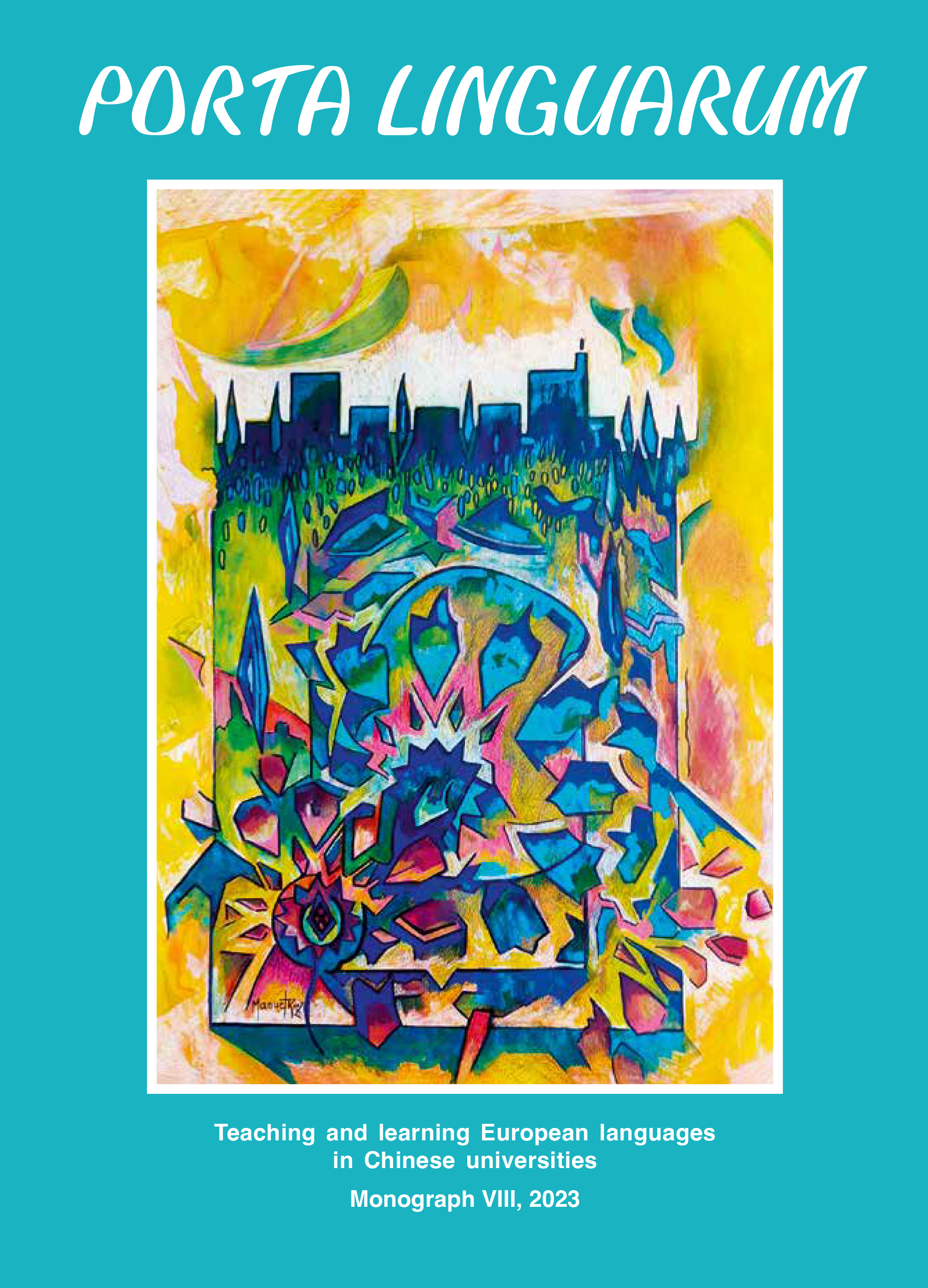A study of integrating discourse-context information into Spanish aspect grammatical teaching for Sinophone learners
DOI:
https://doi.org/10.30827/portalin.viVIII.29215Keywords:
Spanish past tense aspect, grammar teaching, discourse context, comprehension, productionAbstract
This work explores and evaluates the effect of teaching the Spanish past tense aspect (indefinite preterit and imperfective preterit) to Chinese learners in a discourse context compared with the traditional teaching of grammar. We postulate that this teaching methodology—which integrates the content of traditional grammar programs with implicit and explicit instruction on how to interpret discourse-contextual information—will be more effective for Spanish L2 learning in the Chinese university context. In order to test the effect, we conducted a study with two groups of students under two different conditions. The experimental group contained 18 subjects, and the control group, which was taught in a traditional grammar program, contained 17 subjects. Using a teaching experiment that involved three online video-based grammar classes and the gathering of students’ data from pre- and post-tests consisting of comprehension task and multiple-choice tasks, we observed that the instruction of how to interpret aspectual information in a discourse context improved the learners’ ability to analyse and comprehend the target grammar point. However, the learners did not show more accuracy in their use of stative verbs in the post-test than that in the pre-test.
FUNDING INFORMATION. This research was funded by National Social Science Foundation of China (20CYY001).
Downloads
References
Chu, C. C. H. (2006). A discourse grammar of Mandarin Chinese. Beijing: Beijing Language and Culture University Press.
Comrie, B. (1976). Aspect: An introduction to the study of verbal aspect and related problems (Vol. 2). New York: Cambridge University Press.
Díaz, L., & Yagüe, A. (2015). Las gramáticas papeles y elefante: Behind the scenes sin champiñones ni talarañas. MarcoELE Revista de Didáctica español como lengua extranjera 21, 1–23.
De Swart, H. (1998). Aspect shift and coercion. Natural Language & Linguistic Theory, 16(2), 347–385.
Feng, S. (冯胜利), & Shi, C. (施春宏). (2011). Trinitarian grammar in teaching and learning Chinese. Linguistic Sciences, 5, 464–472. [2011, 论汉语教学中的“三一语法”. 《语言科学》第5期:464-472.]
Gergross, G., Puchta, H., & Thornbury, S. (2006). Teaching Grammar Creativity. Austria: Helbling Languages.
Jessner, U. (2018). Metacognition in multilingual learning: A DMM perspective. In A. Haukas, C. Bjorke, & M. Dypedahl (Eds), Metacognition in language learning and teaching (pp. 31–47). New York and London: Routledge.
Jessner, U., & Cenoz, J. (2019). Teaching English as a third language. In X. Gao (Ed.), Second handbook of English language teaching (pp. 155–172). Switzerland: Springer.
Larsen-Freeman, D. (2014). Saying what we mean: Making a case for ‘language acquisition’ to become ‘language development’. Language Teaching, 48(4), 491–505.
Larsen-Freeman, D. (2016). Classroom-oriented research from a complex systems perspective. Studies in Second Language Learning and Teaching, 6(3), 377–393.
Larsen-Freeman, D. (2017). Complexity theory: The lessons continue. In L. Ortega & Z. Han (Eds), Complexity theory and language development (pp. 11–50). Amsterdam: John Benjamins.
Mayer, R. E., & Moreno, R. (2003). Nine ways to reduce cognitive load in multimedia learning. Educational Psychologist, 38(1), 43–52.
Mayer, R. E., & Wittrock, M. C. (1996). Problem-solving transfer. In D. Berliner & R. Calfee (Eds), Handbook of educational psychology (pp.45–61). New York: Macmillan.
Mercer, S. (2018). Psychology for language learning: Spare a thought for the teacher. Language Teaching, 51(4), 504–525.
Moreno, R., & Mayer, R. E. (1999). Cognitive principles of multimedia learning: The role of modality and contiguity. Journal of Educational Psychology, 91(2), 358–368.
Moreno, R., & Mayer, R. (2007). Interactive multimodal learning environments special issue on interactive learning environments: Contemporary issues and trends. Educational Psychology Review, 19(3), 309–326.
Paivio, A. (1990). Mental representations: A dual coding approach. Oxford: Oxford University Press.
Rojo, G. (1990). Relaciones temporalidad y aspecto en el verbo español. In I. Bosque (Ed.), Tiempo y aspecto en español (pp. 17–43). Madrid: Cátefra.
Smith, C. (1997). The parameter of aspect (2nd ed.). Dordrecht: Kluwer.
Tian, T. (田恬). (2020). The elementary Chinese-grammar teaching based on Trinitarian grammar. Wenjiao Ziliao, 33, 5–7. [2020, 基于“三一语法”理念的初级汉语语法教学.《文教资料》第33期:5-7.]
Xiao, R., & T. McEnery, T. (2004). Aspect in Mandarin Chinese: A corpus-based study (Vol. 73). Amsterdam: John Benjamins Publishing.
Vendler, Z. (1967). Linguistics in philosophy. Ithaca: Cornell University Press.
Wang, Y. (王媛). (2021). On the innovation of college English grammar teaching based on context theory. Journal of Educational Institute of Jilin Province, 2, 78–81. [2021, 基于语境理论的大学英语语法教学创新研究.《吉林省教育学院学报》第2期:78-81.]
Zheng, Y. (郑咏滟). (2019). Effective foreign language teaching from the perspective of complex dynamic systems theory. Contemporary Foreign Language Studies, 19(05), 12–16. [从复杂动态系统理论谈有效的外语教学. 当代外语研究, 19(05), 12-16.]
*****
FUNDING INFORMATION. This research was funded by National Social Science Foundation of China (20CYY001).



















